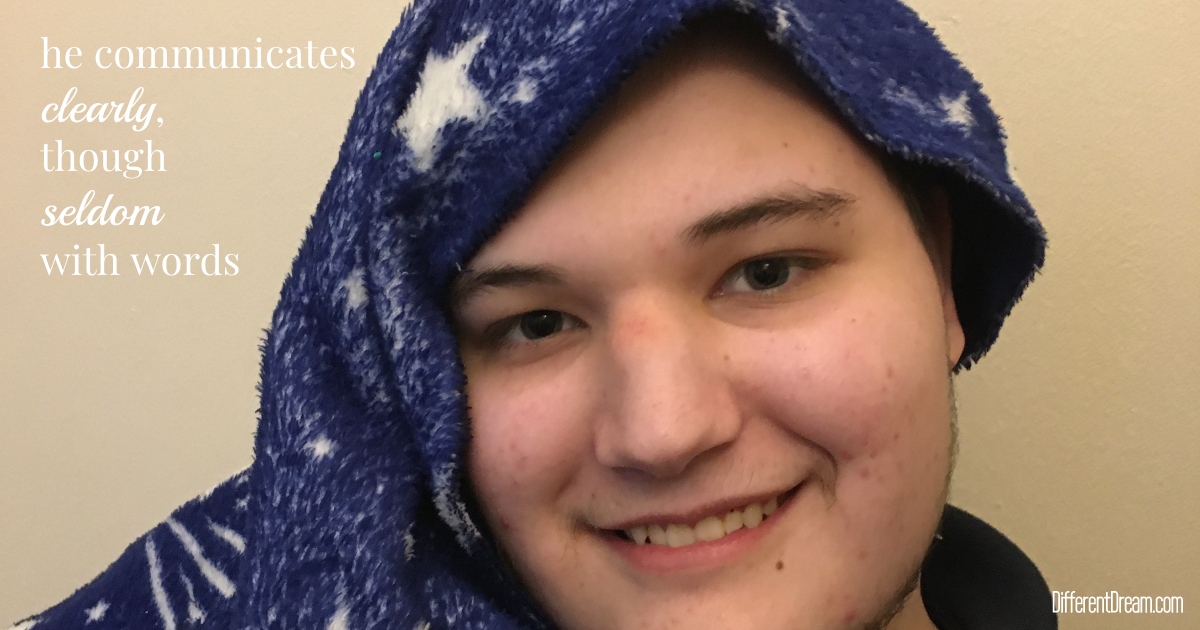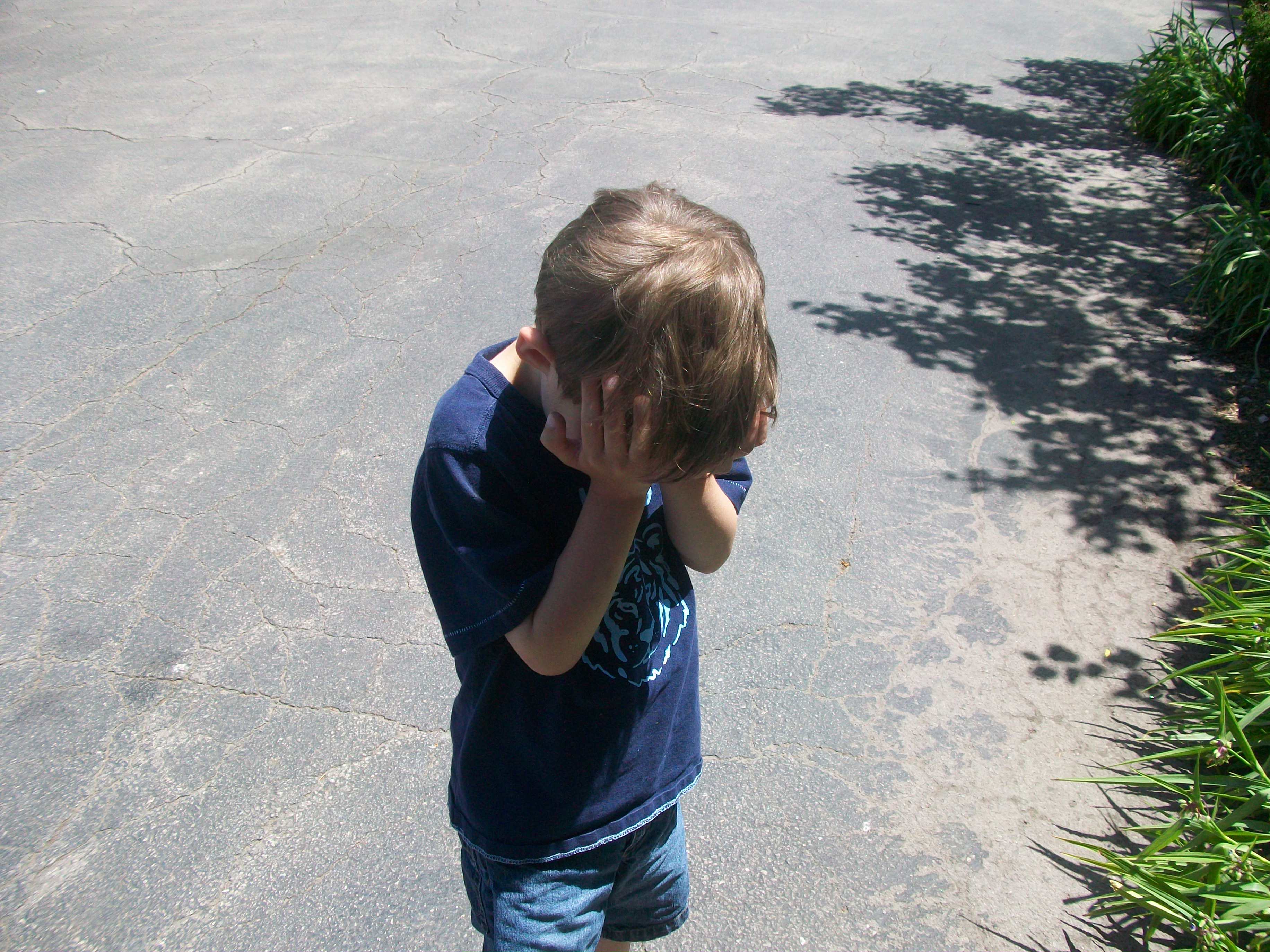Non-Verbal Kids Can Communicate Clearly if We Learn their Language

Non-verbal kids can communicate. In fact, they communicate all the time. Guest blogger Mark Arnold continues to learn more about how non-verbal kids can communicate from his son James. Today, Mark shares what James has been teaching him lately.
There is a perception that children who are labelled or identified as nonverbal are unable to communicate. Many believe that kids who have less speech than other children (or no perceived speech at all) can’t share how their feelings, needs, or desires that humans communicate with each other every day.
This perception creates anxiety both for children and their families. Speaking like everyone else becomes a mountain to climb at all costs. This goal overlooks and diminishes the other wonderful ways children subtly and clearly communicate with us.
Those who study non-verbal communication say that perhaps 60-70% of communication doesn’t rely on words. This means that non-verbal kids can communicate using eye contact, facial expressions, gestures, posture and other body language, their mood, sounds, loudness, pitch, rhythm, and tone to communicate. So why do we put so much energy into trying to force non-verbal children to communicate through words instead of focusing on their communication skills? It’s like teaching Japanese to a child without understanding or using their first language.
My son, James, has a limited range of verbal communication, maybe 20 words (one of them is “beer” but that’s another story!), but he communicates fluently. He makes it abundantly clear how he is feeling, what he wants or needs, and what he wants to do. We need to tune in to his communication and understand it. It takes time to learn his form of communication. Sometimes we don’t pick up on something straight away. This can cause frustration, but patience and practice helps!
One of James’ words is “appy!” (happy). He often uses it to communicate how he is feeling, whether he is happy or not. If James uses “appy” while he’s frowning, his eyes are downcast, his tone is abrupt and low, he’s is scrunched on the sofa with his legs pulled up, he is telling us how he is feeling in many ways. The word “appy!” is his general catch-all phrase for feelings.
Similarly, if James is enjoying his food at the dinner table and wants another portion he might say “more.” He might also say “p-ease” (please) and point at what he wants. He will look at it, then us, then back at what he wants again.
If he is feeling unwell, he will lie on his sofa and look suitably miserable. He will also place our hands on whatever hurts–his stomach or head. His communication gives us a better understanding of what might be happening so we can help him.
Non-verbal communication is complex. It can take more decoding than verbal communication, but if we are willing to learn it, it is rich, expressive, and as beautiful as speech. If your child is labelled or identified as non-verbal, remember that non-verbal kids can communicate. Your job is to learn that language and explore ways to develop their speech. It’s just as beautiful!
Do you like what you see at DifferentDream.com? You can receive more great content by subscribing to the monthly Different Dream newsletter and signing up for the daily RSS feed delivered to your email.
By Mark Arnold
Mark Arnold is the Additional Needs Ministry Director at Urban Saints, a leading national Christian children’s and youth organization. He is co-founder of the Additional Needs Alliance, a national and international advocate for children and young people with additional needs or disabilities. Mark is a Churches for All and Living Fully Network partner, a member of the Council for Disabled Children and the European Disability Network. He writes an additional needs column for Premier Youth and Children’s Work (YCW) magazine and blogs at The Additional Needs Blogfather. He is father to James, who has autism spectrum condition, associated learning disability, and epilepsy. To find out more about how Mark’s work can help you, contact him at: marnold@urbansaints.org or @Mark_J_Arnold
Subscribe for Updates from Jolene
Related Posts
Special Needs Parenting and Marriage
Special needs parenting and marriage can be a hard combination. Amy Stout describes a phrase from The Princess Bride that helps keep her marriage strong.
Post-Traumatic Stress Disorder and Sleeping Babies
A study about sleeping babies and their response to angry voices could explain why some children develop post-traumatic stress disorder and others don’t.
Hidden Grace for Parents of Kids with Special Needs
Have you ever hidden from God and felt Him looking for you? Then this poem about hidden grace by guest blogger Stephanie Ballard is for you.






0 Comments